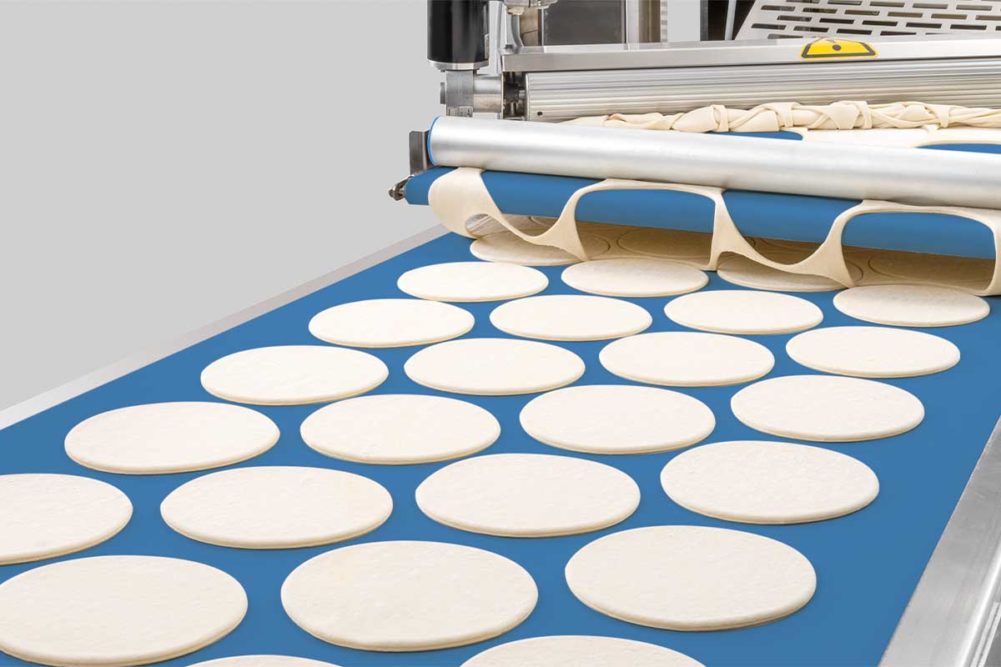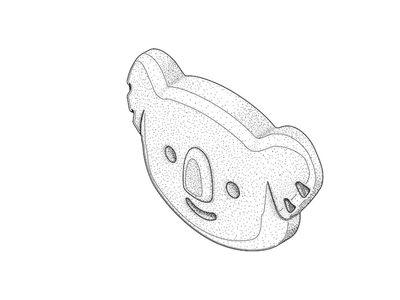A flexible flatbread or tortilla production line may enable bakers to make a plethora of products and meet their customers’ needs, but they aren’t without their limitations.
“Variety is always the enemy of efficiency,” said Bill Zimmerman, regional account manager, AMF Bakery Systems.
Changeovers must be designed to be quick and efficient to prevent production from getting off track. Labor is always an issue, whether for monitoring production, transfers or even changeovers. Sergio Caballero, regional sales manager, FoodTools, pointed out that this can be the biggest cost to a bakery and automation can reduce that overall cost. Automation also can help improve the product.
“The other item we always point out is the consistency and quality of the cuts our machines offer and how we can reduce waste,” he said.
Waste becomes another issue. Cutting products out of the dough sheet, whether automatically or manually, will always create some amount of waste in the form of scrap or trim dough that bakers must reckon with.
“If you produce a continuous dough sheet, when you cut a round shape out of that square, you have scrap,” said Rich Wall, executive general manager, Sottoriva America. “What you do with that scrap makes the difference between men and mice.”
Zimmerman mentioned that scrap can be added back to future dough sheets at the dough extruder, or by incorporating into the mixing of the next batch.
Nick Magistrelli, vice president of sales, Rademaker USA, said Rademaker helps bakers eliminate this waste stream by automating the process of sending the scrap dough back to the mixer or dough feeder.
To reduce scrap even further, Wall suggested exploring new shapes such as hexagons to make use of as much of the dough sheet as possible. By staggering the shape, scrap is reduced.
Rather than reusing scrap, Wall also recommended bakers find a new way to use that scrap by developing a new product, such as pita or tortilla chips, that could become profitable in the future.
The varied components — dough formers, dividers, extruders, sheeting stations, laminators, docking stations and more — all add capabilities but also linear square footage. Space inevitably becomes a constraint bakers must contend with if they want both volume and flexibility.
“Space is key,” Wall said. “When you look at a cooling conveyor, these are multi-tiered, and the exit belt could be up to 30 feet and then the oven is another 15 to 25 feet. For the production line, you need a bowling alley to install the line.”
Building a flexible line that fits in a bakery’s available space requires some collaboration between the baker and equipment supplier.
“We get creative with space,” Magistrelli said. “You need that length because you want the volume so you can produce units at a certain price point. Our customers want variety, flexibility and speed, and speed requires length. The biggest change we’ve seen is we’ve started making our lines wider to help them get more volume and slow down.”
By going wider, bakers can reach necessary volumes when they may not have the floorspace to support a long production line.
Zimmerman said AMF Tromp gets innovative with space constraints by looking up.
“Overhead proofing can take advantage of vertical space,” he said. “Sheeting lines can require significant linear space based on the throughput, so we look for ways to use the space above the line.”
And sometimes it’s not worth it to have one extremely flexible line to produce all the flatbreads a bakery is putting out. Between capital and floorspace constraints, if the volume will support two lines, Moline said that can sometimes be preferable.
“You can have one line that does all different products, but there comes a time when it doesn’t make sense,” he said. “You could have two lines that cost less than one extremely complicated, flexible system.”
When it does make sense, a flexible system enables bakers to reach new customers and support a creative R&D team trying to unlock more sales in the tortilla and flatbread space.
This article is an excerpt from the April 2024 issue of Baking & Snack. To read the entire feature on Tortilla & Flatbread Processing, click here.





